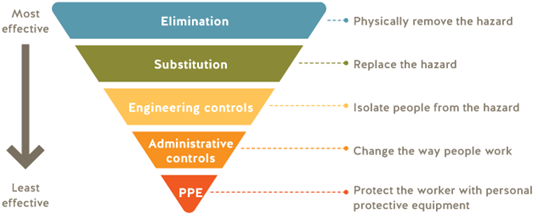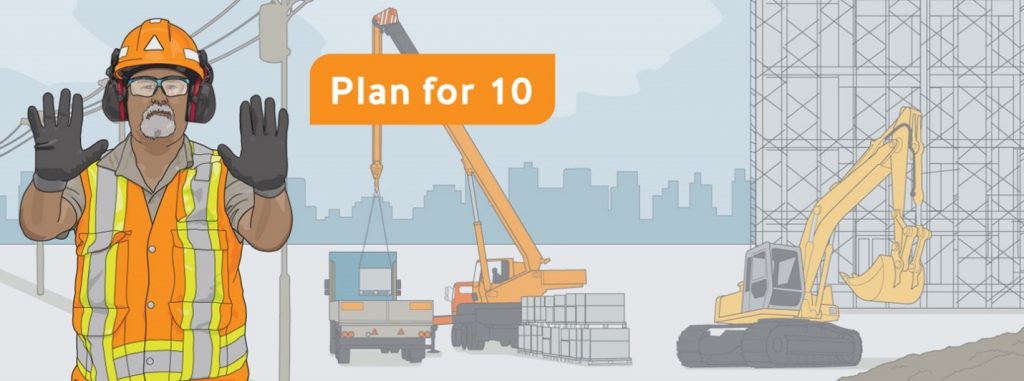Keep at least 10 feet (three metres) away from high-voltage powerlines and conductors.
If you work around high voltage equipment you need to be aware of the safe distance (limits of approach) to stay away from it. This safe distance applies to workers, machines, tools and equipment.
The minimum limit of approach is 10 feet (three metres) but, depending on the voltage of the conductor, you may need to keep workers and equipment even further away. Electricity can flow through objects that contact power lines or move across a gap from a line to an object. It’s essential to consider the limits of approach when planning a construction project to ensure the health and safety of workers throughout every stage of the project.
Everyone has a role to play in ‘planning for 10’
“While employers are responsible for conducting a risk assessment and producing a plan for safety around high-voltage electricity, everyone has a role to play,” says Carol-Anne Boufford, WorkSafeBC Prevention Field Services manager for the construction industry.
Planning for workplace safety starts at the beginning of any new construction project. Owners, developers, architects and engineers all play a critical role in planning for the long-term health and safety of all workers involved in the project. So do municipalities who issue building permits, along with employers, contractors and workers who also need to understand their responsibilities when working near high-voltage electrical equipment and conductors.
Owners, developers, architects and engineers
A construction site, as a workplace, must be designed with workers’ safety in mind. Architects need to consider the safety of the workers who will build what they envision.
How will their designs affect workers during their construction phase? Engineers are responsible for ensuring the construction process is safe for workers and in compliance with safety regulations, codes, and laws.
The developers and owners who manage and supervise construction projects all have responsibilities to plan for safety. As well, prime contractors are responsible for co-ordinating the safety of all trades and contractors on a multi-employer worksite and must ensure there is a system in place for worker safety. Their project co-ordination needs to address the design plans developed and implemented by owners, developers and architects. They are responsible for doing everything reasonable to ensure a system or process is in place that promotes health and safety on the worksite.
Municipalities
Municipalities review any submitted development, demolition, building or renovation applications and provides approvals and permits.
Employers
Where required employers must conduct risk assessments, control risks and apply suitable controls to prevent workers from injury. Employers must inform their workers of the potential hazards, including electrical hazards, before they start work near energized electrical conductors or equipment.
Implementing the hierarchy of controls, as outlined in the following diagram, can help to make sure all controls are considered to best protect workers. It’s important to follow the hierarchy in order, starting with elimination or substitution, rather than starting with the lowest level of control measures. While the controls are listed in order of effectiveness, all five types of controls must be considered.

Once employers have conducted risk assessments and have plans in place for controlling risks, they need to communicate this to workers.
Workers need to know the work arrangements and procedures to follow, and supervisors, lead hands and contractors should review the high-voltage hazards at pre-job meetings. Everyone on the crew needs to know the high-voltage electrical hazards and the plan for working safely.
Workers
Workers are responsible for understanding and following work arrangements and procedures — ensuring their own safety and the safety of their co-workers.
For more information
For more information on the limits of approach, working safely around high-voltage electricity and the OHS Regulation and policy, visit worksafebc.com/electrical-safety.











Recent Comments
comments for this post are closed